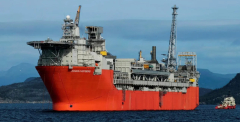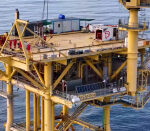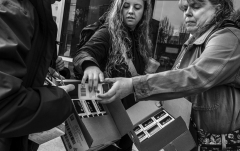Home Fossil Energy Oil & gas production uptick sets the scene for ‘solid’ financial performance as Equinor bolsters low-carbon shift with spike in renewables
The Norwegian state-owned energy giant Equinor has managed to maintain a stable net profit in the second quarter of 2024, registering a drop quarter on quarter but a slight increase compared to the same period last year, while the firm continued working on field developments and supplied hydrocarbons to Europe to increase the continent’s energy security. As a result, the Norwegian heavyweight raised its overall energy production ante both in oil and gas and renewable energy arenas.
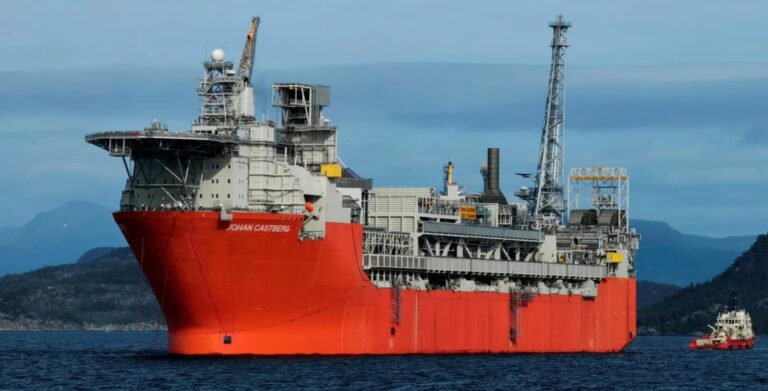
On July 24, Equinor reported a net operating income of $7.65 billion in Q2 2024, up from $7.63 billion in Q1 2024 and from $7.05 billion in the same quarter last year. The reported net income of $1.87 billion was lower than last quarter’s $2.67 billion, but slightly higher than $1.82 billion in Q2 2023.
The firm’s adjusted operating income did not follow the rising trend as it totaled $7.48 billion in the second quarter of 2024, dropping slightly compared to both last quarter’s $7.53 billion and $7.79 billion in the same quarter last year, the latter representing a 4% decrease.
Equinor delivered an adjusted operating income of $7.48 billion, the vast majority of which, or $6.13 billion, came from its Norwegian business, followed by $699 million from the international segment, and $264 million from U.S. operations.
The marketing, midstream, and processing (MMP) segment delivered an adjusted operating income of $521 million, mainly thanks to the gas and power business, including strong results from LNG trading.
Adjusted operating income from renewables was negative $90 million, which the firm thinks was caused by costs of project development exceeding the profits from assets in operations which stood at $41 million in this quarter.
Cash flow from operating activities before taxes paid and working capital items amounted to $9.75 billion in Q2 2024, according to the energy firm. Additionally, cash flow from operations after taxes paid was $1.90 billion for the quarter and $7.74 billion in 2024 so far.
Equinor claims to have paid two NCS tax installments, totaling $6.98 billion in Q2 2024, noting that the organic capital expenditure was $2.89 billion for this quarter, while total capital expenditures were $4.78 billion.
After taxes, capital distribution to shareholders, and investments, net cash flow ended at negative $4.22 billion in the second quarter, which the firm believes reflects the increased number of tax installments from the prior quarter and continued high capital distribution levels.
The firm’s adjusted net debt to capital employed ratio was negative 3.4% at the end of Q2, which was significantly better than the negative 19.8% at the end of Q1 2024.
Anders Opedal, President and CEO of Equinor ASA noted: “Our operational performance continued to be strong through the quarter and we delivered 3% production growth. This secured solid financial results. We maintain a competitive capital distribution, expecting to deliver a total of 14 billion dollars to our shareholders in 2024.”
Start-up of new projects propels production growth
The Norwegian giant delivered a total equity production of 2,048 mboe per day in Q2 2024, down from 2,164 mboe per day in the first quarter of this year, but up from 1,994 mboe per day in the same quarter last year.

On the Norwegian Continental Shelf (NCS), strong operational performance and lower impact from turnarounds, paired with new production from the Breidablikk field are believed to have contributed to a production growth of 5% compared to the second quarter of last year.
According to the company, high production from the Troll and Oseberg fields contributed to a 13% increase in gas production, compared to the same period last year. In April, it extended the drilling waste management contract for its Oseberg South platform with Soiltech, a compatriot cleantech service provider.
As stated by Equinor, the Buzzard field in the UK and new wells contributed to new production. However, production in the U.S. was lower due to turnarounds offshore and planned curtailments onshore to capture higher value during peak demand.
Seven offshore exploration wells were completed in Q2 2024, including the Argerich well in Argentina, with no commercial discoveries. As the quarter came to an end, seven wells were ongoing.
“Field developments and high production contributes to energy security for Europe. To unlock further long-term value creation, we continue to optimise our portfolio. We also progressed our renewables projects and accessed three new licences for CO2 storage, to build a profitable business for a future low carbon energy system,” added Equinor CEO.
In line with its energy transition strategy, the Norwegian giant produced 655 GWh from renewables, representing a whopping 90% increase compared to the same quarter last year. Onshore power plants are credited for more than half of the production in the quarter, mainly from the Rio Energy assets and Mendubim solar plants in Brazil, as well as new production in Poland. The offshore windfarms are said to have contributed to growth with strong production.
Equinor and its partners decided to invest close to $1.13 billion to further develop the gas infrastructure in the Troll West gas area, contributing to Europe’s energy security in the long term. When the decision was made, Kjetil Hove, Equinor’s Executive Vice President for Exploration and Production Norway, stated that “the gas from Troll alone meets around 10 % of Europe’s demands.”
-
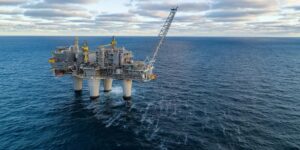
- long read
Posted: 2 months ago
In late May, the FPSO Johan Castberg left Aker Solutions’ Stord yard to undergo sea trials, after which it is envisaged to embark on a 30-year assignment in the Barents Sea later this summer. The project’s start-up was targeted for Q4 2022 but setbacks and cost overruns resulted in a two-year delay. Last year, the Johan Castberg partnership, comprising Equinor, Vår Energi, and Petoro, updated the project’s cost estimate to

